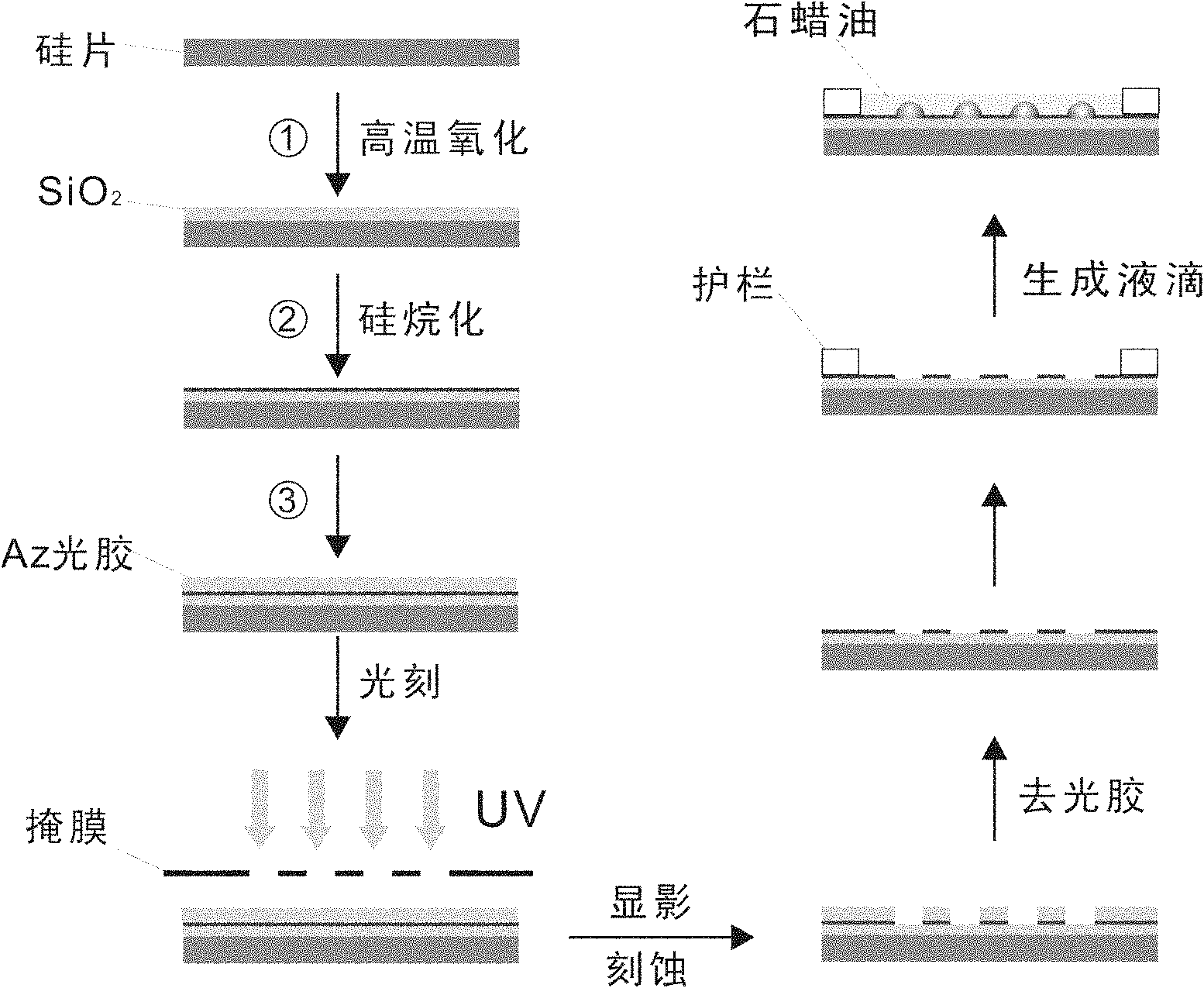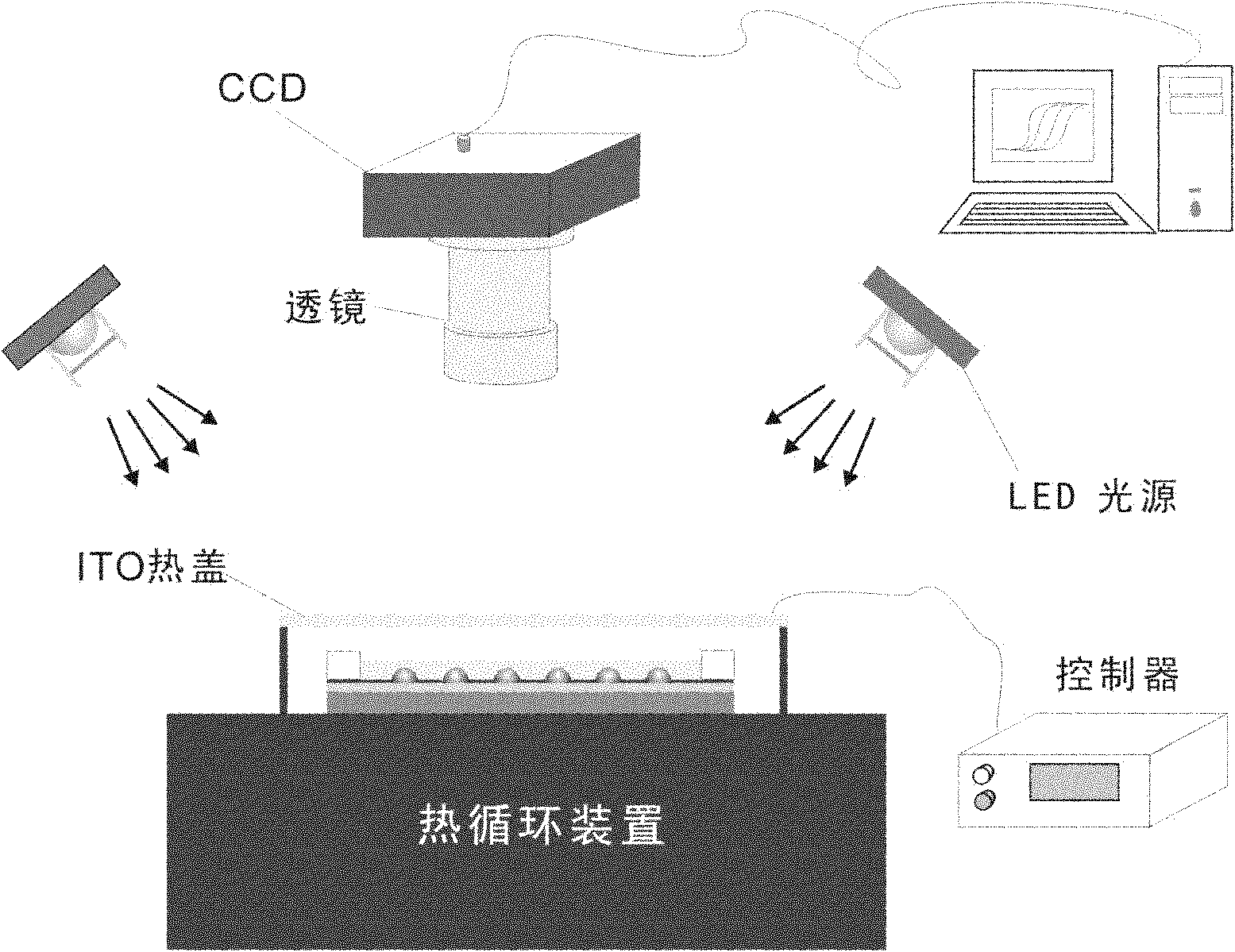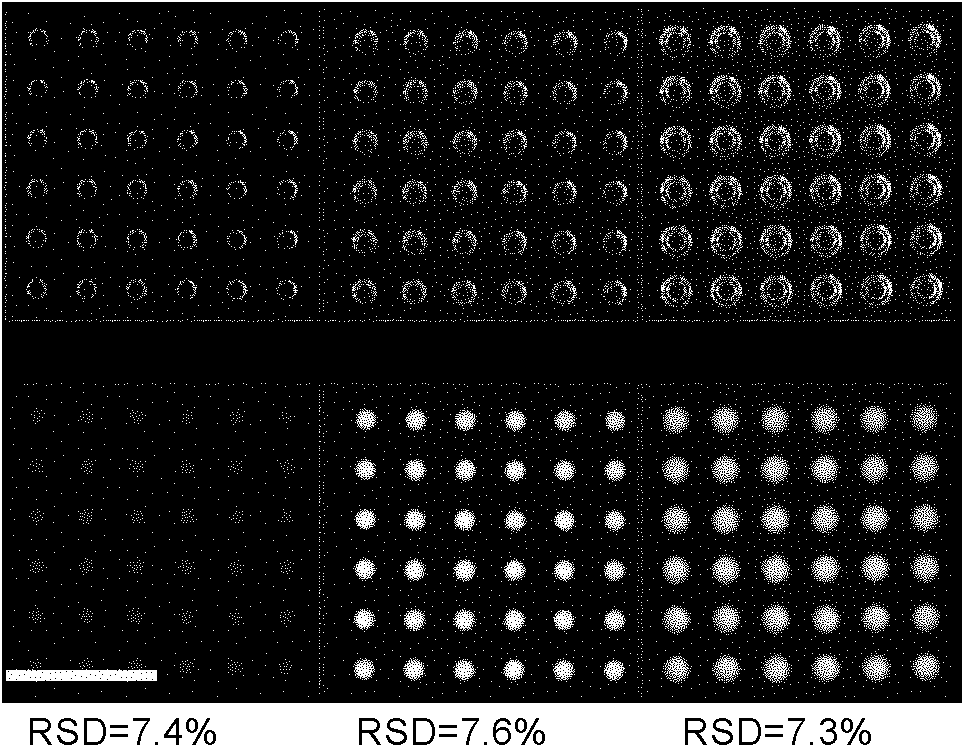PCR chip based on droplet array and application thereof
An array and chip technology, applied in the field of real-time quantitative PCR chip and its fluorescence detection system, can solve the problems of water evaporation, fusion and translocation of droplets, etc., and achieve the effect of avoiding interference and reducing mutual pollution
- Summary
- Abstract
- Description
- Claims
- Application Information
AI Technical Summary
Problems solved by technology
Method used
Image
Examples
Embodiment 1
[0040] Prepare chip:
[0041] A 6-inch monocrystalline silicon wafer is oxidized in a high-temperature furnace at 1100°C for 2 hours, and SiO is formed on the surface 2 oxide layer, and then placed in 1% octadecyltrichlorosilane (solvent is toluene) solution at room temperature for 2 hours to make SiO 2 The surface of the oxide layer is silanized, and after taking it out, wash it with toluene, isopropanol and absolute ethanol, and finally wash it with deionized water and dry it in the air. Next, put the silicon wafer in the glue-spinning machine, drop a small amount of AZ photoresist on the surface, spin the glue at 2000rpm for 1 minute, and then put the silicon wafer in the glue-baking machine at 90°C to heat the film for 10 minutes and cool it down. Finally, a mask printed with light-transmitting array dots is covered on the surface of the photoresist. The light-transmitting array dots on the mask are circular dots with a diameter of 300um, forming a 6×6 square array. The m...
Embodiment 2
[0044] Embodiment 2 Multi-step addition reagent stability and reproducibility investigation
[0045] Take the fluorescein dye solution as the sample, use a pipette with a range of 0.1-2.5 μL, add the sample three times in sequence on the 6×6 array chip, and generate 100 nL for the first time with a concentration of 10 -6 mol / L fluorescein solution droplet array (as attached image 3 a), then add 100nL concentration of 10 to the generated droplets -5 mol / L fluorescein solution (as attached image 3 b), finally add 300nL concentration of 10 -5 mol / L fluorescein solution (as attached image 3 shown in c). attached image 3 Among them, the upper row is a bright field photo (directly photographed with a common tungsten light source), and the lower row is a fluorescence photo. The fluorescence intensity was analyzed with a data processing program. According to the average value of the fluorescence intensity of 36 droplets, the relative standard deviation can be calculated to b...
Embodiment 3
[0046] Example 3 microRNA quantitative analysis
[0047] For most RT-PCR reaction systems using RNA as a template, reverse transcription reaction and PCR amplification need to be operated separately in two steps. In order to demonstrate the applicability of the system for two-step real-time quantitative RT-PCR detection and analysis, the detection sensitivity and linear range of the system were investigated using artificially synthesized mir-122 as a sample. First, generate 6×6 100nL droplets on the chip (chip array with attached image 3 Consistent), each column of 6 droplets contains the same concentration of mir-122 samples, the amount of mir-122 added to the 6 columns of droplets is (from right to left) blank, 9.6×10 3 , 9.6×10 4 , 9.6×10 5 , 9.6×10 6 , 9.6×10 7 copies, spanning 5 orders of magnitude. Next, add 100nL reverse transcription reagent master mix solution (reverse transcription master mix solution volume is 10uL, contains dNTP mixed solution concentration ...
PUM
 Login to View More
Login to View More Abstract
Description
Claims
Application Information
 Login to View More
Login to View More - R&D
- Intellectual Property
- Life Sciences
- Materials
- Tech Scout
- Unparalleled Data Quality
- Higher Quality Content
- 60% Fewer Hallucinations
Browse by: Latest US Patents, China's latest patents, Technical Efficacy Thesaurus, Application Domain, Technology Topic, Popular Technical Reports.
© 2025 PatSnap. All rights reserved.Legal|Privacy policy|Modern Slavery Act Transparency Statement|Sitemap|About US| Contact US: help@patsnap.com



